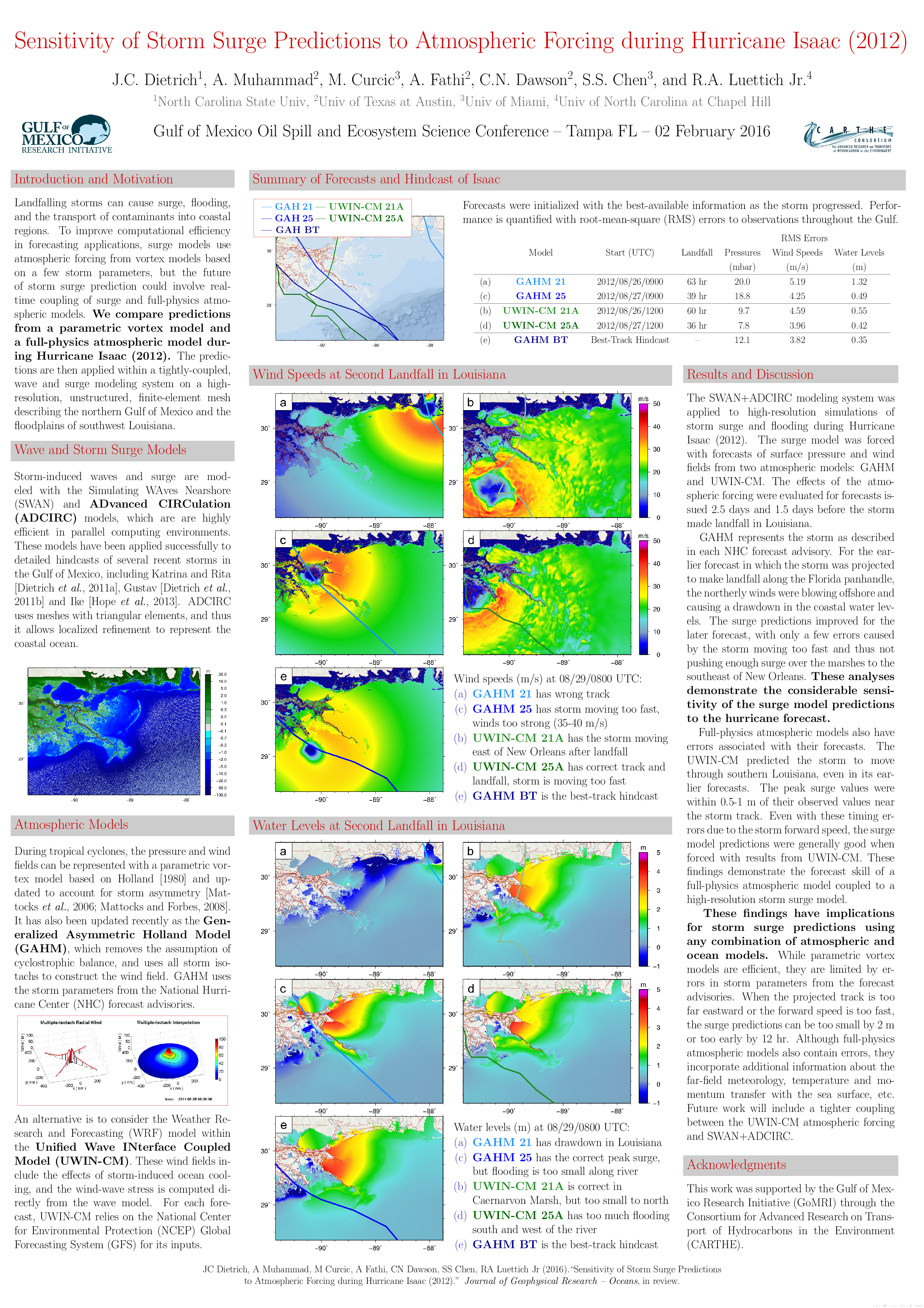 2016/04/28 – NCDS
2016/04/28 – NCDSNational Consortium for Data Science chooses researchers from three universities as 2016 -2017 Data Fellows
Three researchers located at Drexel University, North Carolina State University, and the University of North Carolina at Chapel Hill have been named 2016 -2017 Data Fellows by the National Consortium for Data Science (NCDS) the consortium announced today.
Researchers in North Carolina use the Advanced CIRCulation (ADCIRC) model to provide real-time information about storm surge, water inundation, wind speeds, and wave heights during coastal storms. These models are produced constantly during major storms, however, communicating the information in the simulations to end users, such as emergency managers, is more challenging. This project will use visualization techniques to bring ADCIRC model data to emergency managers so they can quickly identify, analyze, and disseminate information about high-risk areas. By incorporating the model data with other data sources, the researchers hope to enable informed decision-making about evacuations and other disaster management efforts.


